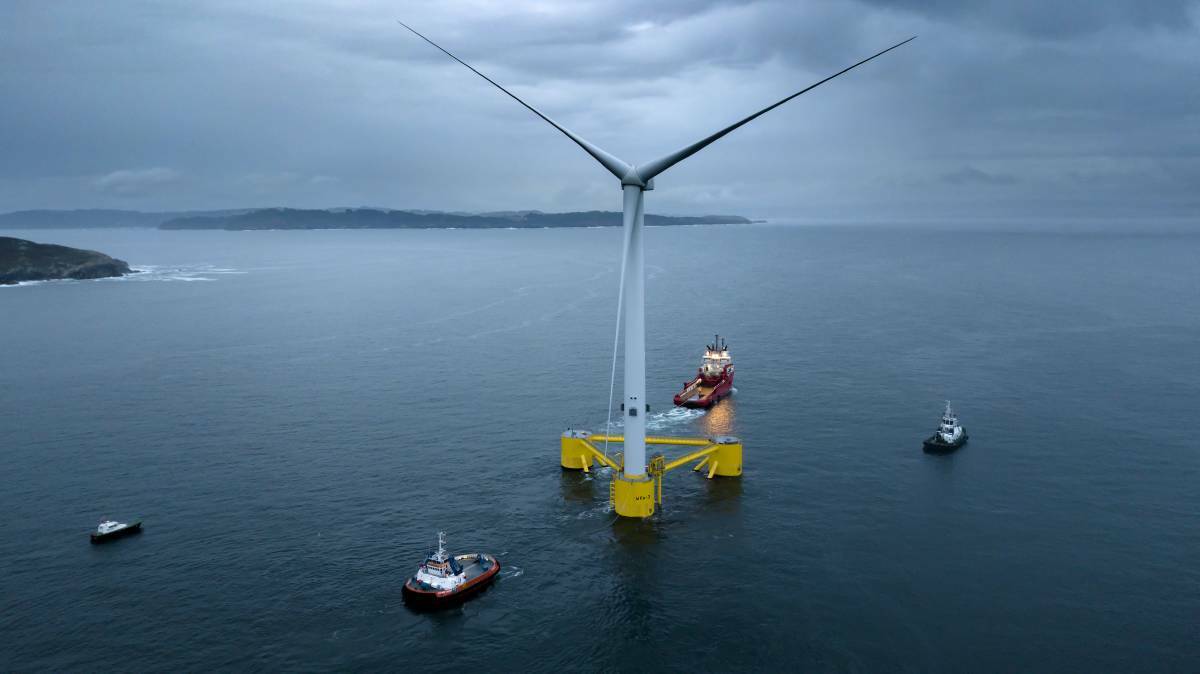
EPBC, OEI, REZ, NOPSEMA, BlueFloat, referral.
Subscribe now for unlimited access.
$0/
(min cost $0)
or signup to continue reading
Confused yet?
Navigating the energy sector at the best of times can be like trying to digest alphabet soup, but when one of the front-runners aiming to develop an Illawarra offshore wind farm submits, and then days later, retracts its plans for said wind farm, this week everything went to a whole new level of confusion.
Add to this the fact that the Illawarra is currently the focus of an attempt to create an entirely new industry with new legislation from scratch and it's no wonder the community was left scratching its head after yesterday's events.
So, what happened, how did we get here and what's next for the most hot button topic in the Illawarra since the merger of St George Dragons and the Illawarra Steelers?
What happened this week?
BlueFloat's documentation as part of its submission under the EPBC Act was released for public comment on Friday. BlueFloat had self-referred its project under the EPBC Act because it clearly would fall under the act's purview and had been preparing the documentation required for this process since last year.
The footprint of BlueFloat's proposal falls within the draft offshore wind zone, however this zone could change significantly, as has occurred in Newcastle, meaning BlueFloat would have to re-do their environmental approvals process, something that Mr Bowen pointed out on Tuesday morning.
"Where they're proposing may or may not be inside the zone that I eventually declare," Mr Bowen said. "If it's not, sorry, bad luck to them. They've wasted their money."
BlueFloat withdrew its referral under the EPBC Act on Wednesday after mounting pressure from both pro and anti-wind farm groups, who said the company had "jumped the gun".
Cunningham MP Alison Byrnes shared these concerns with BlueFloat Country Manager - Australia, Nick Sankey, saying she was "shocked" to see the EPBC referral.
"The sentiment expressed by many members of our community is that the referral was ill-timed, confusing and there was not enough time for our community to properly consider the proposal," she said.
"I advised that whilst the community is very keen for studies, but these must be accurate and based on a licensed proposal."
BlueFloat then announced they had withdrawn their referral, with Mr Sankey saying they were reconsidering the timing of the process.
"The community must be given adequate time to consider information and nobody, developer or organisation, should pre-empt the Minister's role in considering the community's feedback," Ms Byrnes said.
How did we get here?
On August 14, Climate Change and Energy Minister Chris Bowen opened consultation on the proposed offshore wind zone for the Pacific Ocean off the Illawarra.
This is a process that occurs under the Offshore Electricity Infrastructure Act, which was passed in 2021.
Consultation is open until November 15, after which Mr Bowen will decide to declare all of the zone, some of the zone or not declare a zone at all, and must consider submissions and feedback received from the public and stakeholders over two months.
If Mr Bowen declares a zone, companies interested in developing an offshore wind farm, such as BlueFloat or Oceanex, can apply for a feasibility licence which will enable them to carry out studies within the declared area and create a management plan. The community will be able to provide feedback on any project proposed by a feasibility licence holder, and the resulting management plan will need to address this feedback.
If a company's management plan is approved by the Offshore Infrastructure Regulator, a government body administered by the National Offshore Petroleum Safety and Environmental Management Authority (NOPSEMA), it can then apply for a commercial licence, granted by the Minister.
In addition to this process, wind farm developers will also need to secure separate Commonwealth environmental approvals, regulated by the Environmental Protection and Biodiversity Conservation (EPBC) Act, due to being located in Commonwealth government waters and their potential to impact nationally protected species. This act is overseen by federal Environment Minister Tanya Plibersek.
The federal Environment Department will assess any proposal referred to it under the EPBC Act, with Ms Plibersek acting as the final decision maker.
Opportunities for public feedback can occur when the proposal is submitted for referral, and during the assessment process.
The process under the Offshore Electricity Infrastructure Act and the EPBC Act are two separate processes, overseen by separate ministers. Offshore wind farm developers will need to be approved by both if they are to proceed.
What now?
The process overseen by Mr Bowen under the Offshore Electricity Infrastructure Act will continue, and if a zone is declared, BlueFloat may apply for a feasibility licence.
BlueFloat, and any other prospective wind farm developer, will need to go through the EPBC Act process.
In addition to Commonwealth processes, wind farm developments will need to go through state-government approvals for the land-based components and technology such as power lines that go through NSW waters, which are up to three nautical miles or 5.6 kilometres offshore. The offshore wind projects form part of the Illawarra Renewable Energy Zone, which is administered by NSW government body EnergyCo.
These processes will also include elements of public feedback.
Due to the multiple levels of approvals and level of detail required, no wind farm development is expected to begin sending power to shore before the end of this decade.
Our news app has had a makeover, making it faster and giving you access to even more great content. Download The Illawarra Mercury news app in the Apple Store and Google Play.


